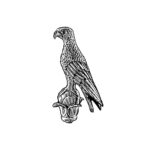The curriculum of the “Master’s Program in Chemistry” is presented in the table below:
| Specialization (I):
Analytical Chemistry, Environmental and Food Chemistry and Technology |
||
| A’ Semester | ||
| N/A | COURSE | ECTS |
| 1 | Modern Techniques and Applicationsof Chemical Analysis | 6 |
| 2 | Environmental Chemistry and Technology | 6 |
| 3 | Advanced Courses in Food Chemistry and Biochemistry | 6 |
| 4 | Advanced Laboratory of Instrumental Analysis | 12 |
| B ́ Semester | ||
| 1 | Applications of Nanomaterials in Analytical Chemistry | 6 |
| 2 | Advanced CoursesinFood Processes and Packaging | 6 |
| 3 | Special issues of Food Quality and Safety | 6 |
| 4 | (a) Advanced Food Analysis and Technology Laboratory or
(b) Environmental Pollution Control Laboratory |
12, each |
| C’ Semester | ||
| 1 | Laboratory Research | 12 |
| 2 | Postgraduate Thesis | 18 |
| D’ Semester | ||
| Continuation, Writing and Computer Support of Diploma Work | 30 | |
| Specialization (II):
Chemistry, Physical Chemistry and Materials Technology – Epistemology (*) |
||
| A’ Semester | ||
| N/A | COURSE | ECTS |
| 1 | Surface phenomena – heterogeneous catalysis – photocatalysis | 6 |
| 2 | Synthesisof Advanced and Nanostructured Materials | 6 |
| 3 | Computational chemistry – Statistical mechanics – Property structure relationship | 6 |
| 4 | Technology of Petroleum Materials and Biomass | 6 |
| 5 | History of Chemistry (Especially for Science) | 6 |
| 6 | (a) Laboratory of Synthesis and Characterizationof Materials or
(b) Laboratoryof Computational Chemistry and Simulations (I) |
12
|
| B ́ Semester | ||
| 1 | Functional and Catalytic Molecular Materials | 6
|
| 2 | Spectroscopic and Physicochemical Characterization Methods | 6 |
| 3 | Chemistry, Physical Chemistry and Technology of MultiParts | 6 |
| 4
|
a) Epistemology of Chemistry (Especially for Science)
b) Laboratoryof Computational Chemistry and Simulations (II) |
|
| 12
|
||
| 5 |
Chemical Technology Laboratory |
12 |
| C’ Semester | ||
| 1 | Laboratory Research | 12 |
| 2 | Postgraduate Thesis | 18 |
| D’ Semester | ||
| Continuation, Writing and Computer Support of Diploma Work | 30 | |
| Specialization (III):
Synthetic chemistry, biochemistry; bioactive compounds |
||
| A’ Semester | ||
| N/A | COURSE | ECTS |
| 1 | Synthetic Chemistry, Stereochemistry Mechanisms, Photochemistry | 6
|
| 2 | Bio-organic and Bio-inorganic Chemistry-structure of peptidesof proteins and nucleic acids | 6 |
| 3 | Advanced Biochemistry – Current Issues in Biochemistry | 6 |
| 4 | BiologicalMembranes: Structure, Organization and Functions. Biosignaling | 6 |
| 5. | (a) Laboratory of Synthesis and Characterization (I)
(b) Laboratory of Biochemistry (I) |
12 |
| B ́ Semester | ||
| 1 | Biochemistry of xenobiotic compounds – Biotechnological applications | 6 |
| 2 | Chemistry of Diagnostic and Pharmaceutical Compounds | 6 |
| 3 | Total Composition of Natural Products and Pharmaceutical Compounds | 6 |
| 4 | (a) Laboratory of Synthesis and Characterization (II)
(b) Laboratory of Biochemistry (II) |
12
|
| C’ Semester | ||
| 1 | Laboratory Research | 12 |
| 2 | Postgraduate Thesis | 18 |
| D’ Semester | ||
| 1 | Continuation, Writing and Computer Support of Diploma Work | 30 |
You can view and download the course outlines of the “Master’s Degree Program in Chemistry”: here.
